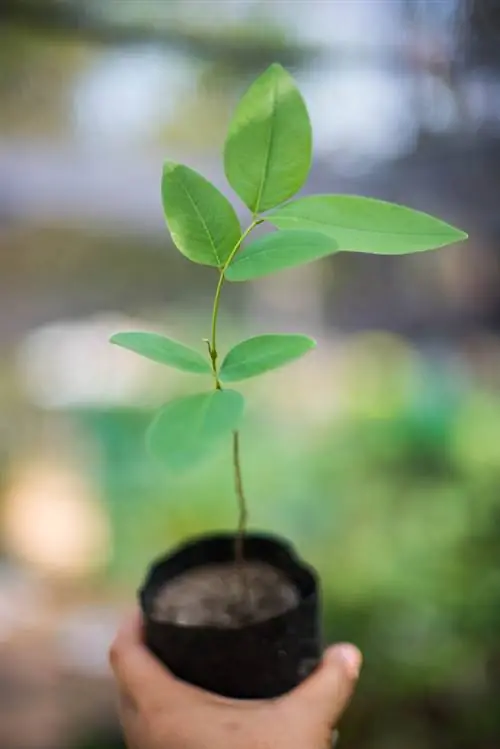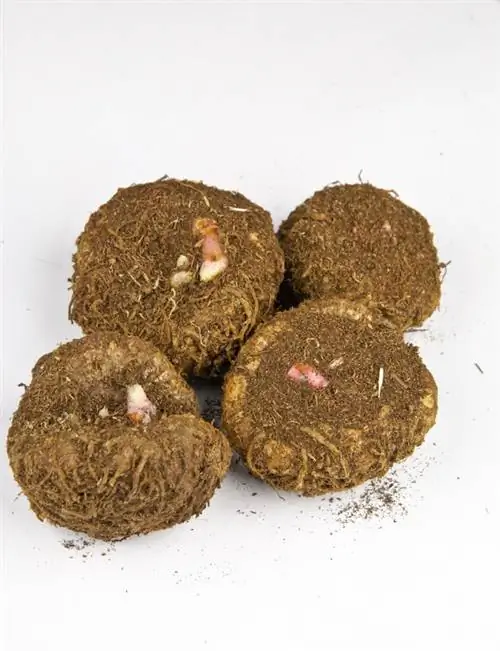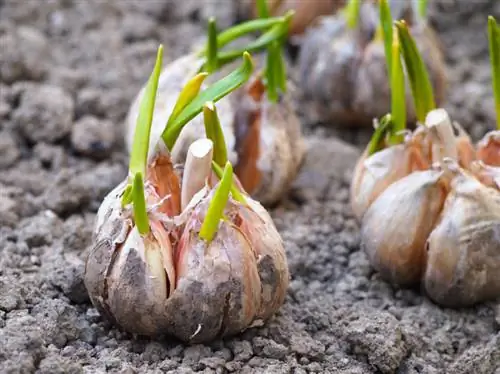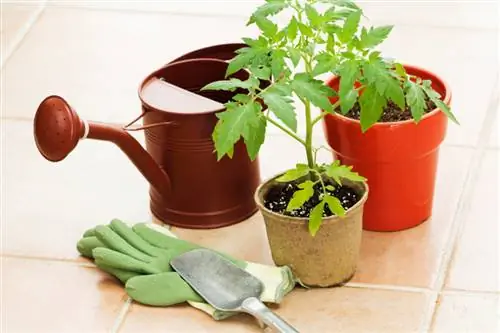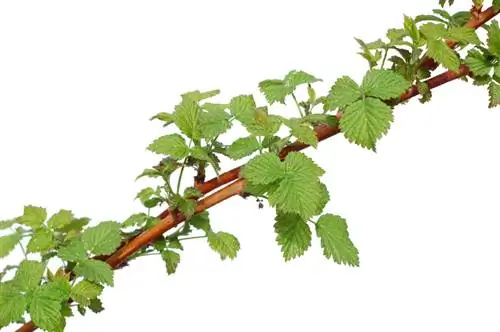- Author admin [email protected].
- Public 2023-12-16 16:46.
- Last modified 2025-01-23 11:21.
Laburnum is a pleasing sight in the garden with its numerous yellow flowers. You could use another plant of this. Feel free to attempt propagation, as even a hobby gardener can do it with ease. We will explain the options to you.
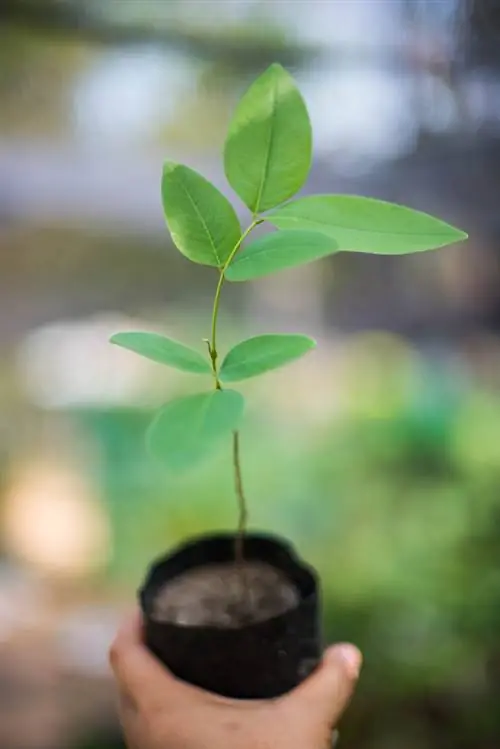
How to propagate laburnum?
Laburnum can be propagated by seeds or cuttings. When propagating seeds, collect the ripened seeds from the dried pods and sow them in potting soil. When propagating cuttings, cut off 15 cm long shoots and root them in potting soil or water.
Two simple and one challenging variant
There are generally three ways to propagate laburnum (botanically Laburnum):
- Propagation by seeds
- Propagation by cuttings
- Propagation through grafting
While the first two methods are easy to use, the third variant requires experience and sensitivity. It is not recommended for hobby gardeners and will therefore not be explained in more detail here.
Tip
The laburnum often multiplies without human intervention. New plants sprout from fallen seeds and can be transplanted to another location.
Propagation by seeds
After the yellow flowers fade, elongated seed pods form. Once the seeds have matured, the pods burst open and release their contents. You can easily grow new young plants from the brown seeds.
- Wait until the seed pods dry out.
- Pick a few of the pods and remove the seeds.
- Sow the seeds in pots with potting soil (€6.00 on Amazon). Cover them lightly with soil.
- First cover the pot with cling film to speed up germination.
- Place the pot at room temperature where it gets plenty of light but little direct sun.
- Pick out the shoots as soon as they have reached a height of about 10 cm.
Propagation by cuttings
Woody or still green shoots are equally suitable for propagating laburnum.
- Cut off shoots about 15 cm long
- put in potting soil
- alternatively, root in the water container first
The planted shoots require consistently moist soil. Therefore, use the watering can regularly, especially on warm days. But always make sure that there is no waterlogging.
Planting out young laburnums
New roots and new leaves clearly show that the cutting propagation worked. You should still wait before moving outside. The still sensitive plants should spend the first few months indoors.
In spring, when frosts are no longer expected, the young plant can be planted in its new destination.

